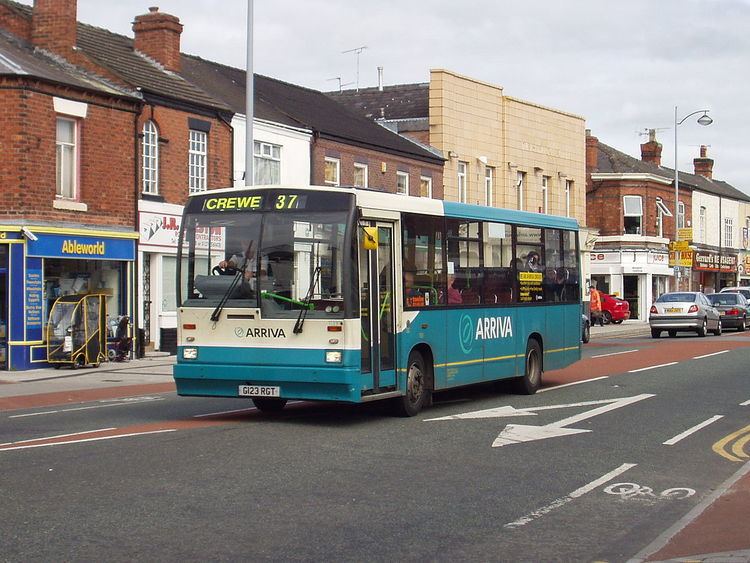Production 1989–1993 Floor type Step entrance | Doors 1 or 2 doors | |
 | ||
Manufacturer DupleCarlyleMarshall Bus | ||
The Duple Dartline is a single-decker bus body built on the Dennis Dart chassis by three manufacturers - Duple Coachbuilders of Blackpool, Carlyle Works of Birmingham and Marshall Bus of Cambridge - between 1989 and 1993. This bus has an asymmetrical windscreen covering the destination sign with an arched top as common.
Contents
Duple
The Dartline was unveiled by Duple at the 1988 British Motor Show, along with the Dennis Dart chassis. The first body to be built on the Dart, it was 2.3m wide, and initially offered in just one length, 9m. Its most distinctive feature was its curved, asymmetric windscreen covering the destination sign with an arched top.
Four pre-production vehicles were built in Blackpool in the summer of 1989, and were used as demonstrators. Of these, three were 9m, but the fourth was 8.5m, after London Buses Limited had insisted on a shorter version.
Production commenced at the end of 1989, with 27 8.5m versions for the London United subsidiary of London Buses Limited, and 34 9m versions. Of the latter, 14 were for another London bus operator, R&I Tours, while five were for Southampton Citybus, three were for Great Yarmouth Transport, another three were for Rossendale Transport, and two were demonstrators for Hong Kong (and were eventually purchased by Kowloon Motor Bus). By this time, however, Duple (and Dennis) had been sold by the Hestair Group to a management buyout team, Trinity Holdings, which had made the decision to close down Duple. The rights to the Dartline were duly sold to Carlyle, and many of these 61 buses were completed by the Birmingham manufacturer and badged accordingly, although they retained their Duple body numbers.
Carlyle
A further 199 Dartlines were built in Birmingham between the spring of 1990 and the beginning of 1992, of which 140 were 8.5m (coded C25 by Carlyle), 16 were 9m (coded C26), and 43 were to a longer length, 9.8m (coded C27 and C28).
All the 8.5m versions were for London Buses Limited, going to its London United, Metroline, Selkent and South London subsidiaries. Of the 9m versions, 13 went to Warrington Borough Transport and one each to Southampton Citybus, Isle of Man Transport, and Yeomans Canyon Travel of Hereford.
Of the 22 C27-coded 9.8m versions, eight were ordered by London Country North West and delivered after that company's takeover by Luton & District, while the remaining 14 went to numerous small operators. Finally, all but one of the 21 C28-coded 9.8m versions went to China Motor Bus in Hong Kong.°
Marshall
Carlyle closed in early 1992, and the rights to all of its designs, including the Dartline, passed to Marshall Bus. The Cambridge manufacturer built a final five Dartlines, all to the 9.8m length and coded C27, in late 1992 and early 1993, of which two went to Mayne's of Manchester and one to Epsom Buses.
Total Dartline production was thus 269, including the four pre-production vehicles of 1989.
In late 1993, Marshall redesigned the Dartline as the C37, with a symmetrical windscreen and a more substantial front bumper.
